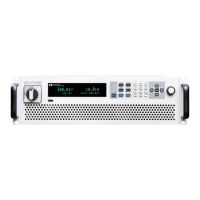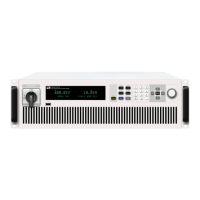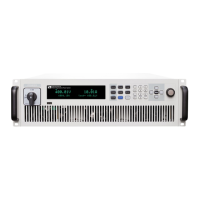Inspection and Installation
• Before connecting test cables, be sure to switch off the instrument.
Power switch is in Off position, otherwise touching the output ter-
minals on the rear panel may result in personal injury or death due
to electric shock.
• To avoid electrical shock, before testing, please make sure the rat-
ing values of the testing cables, and do not measure the current
that higher than the rating value. All test cables shall be capable of
withstanding the maximum short circuit current of the instrument
without causing overheat.
• If several loads are provided, each pair of load wires shall safely
withstand the rated short circuit output current of the power supply
under full load.
• Do not short the battery when connecting or disconnecting the bat-
tery testing circuit. Short circuit may cause severe accident.
• Always use test cables provided by ITECH to connect the equip-
ment. If test cables from other factories are used, please confirm
the maximum current that the test cables can withstand.
• During wiring, check that the positive and negative poles of the test
cables are properly and tightly connected. Do not connect the posi-
tive pole and disconnect the negative pole.
• It is recommended that for battery testing, a fuse must be con-
nected in series between the power supply and the battery to pre-
vent short circuits caused by any problems.
• When connecting the DUT (including but not limited to battery/ca-
pacitor), it is recommended that you purchase the IT-E165A anti-re-
verse connection module to prevent the battery/capacitor reverse
connection that may cause damage to the instrument; When there
is no external auxiliary equipment connected to prevent reverse
connection and anti-spark function, please pay attention to the
safety of the wiring, and be careful not to reverse the battery/ca-
pacitor connection, reverse connection will cause damage to the in-
strument, even if it is not powered on.
• Ensure that the output terminals are either insulated or covered us-
ing the safety covers provided, so that no accidental contact with
lethal voltages can occur.
Electrode introduction
The wiring apertures on the DC electrodes of the 3U model and the cabinet
model are both M8.
Copyright © Itech Electronic Co., Ltd.
30

